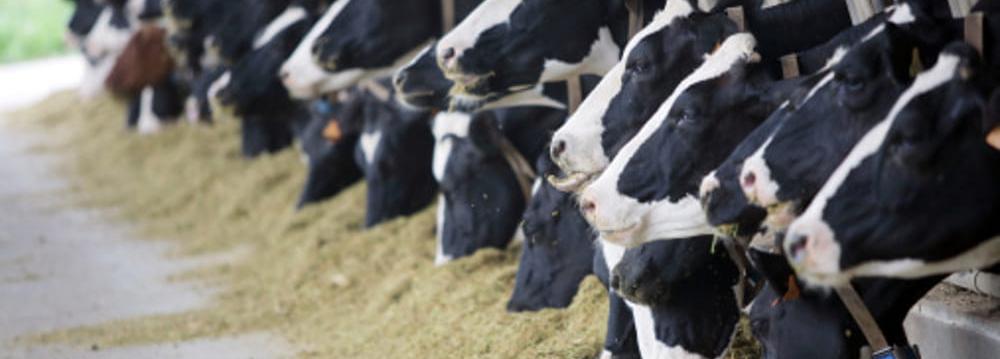The animal feed industry in Iran got off the ground around 64 years ago concurrent with the industrialization of animal husbandry and poultry farming in the country.
“At present, some 645 livestock, poultry and fish feed production units have been registered in the country with an overall working capital of about 300 trillion rials (over $7.92 billion). Of the total sum, more than 40% amounting to 120 trillion rials (over $3.17 billion) pertain to industrial units and the rest to livestock, poultry and fish farms that produce feeds,” Majid Movafeq Qadiri, chairman of Iran Feed Association, told Financial Tribune.
According to Qadiri, local production of feed meets 99% of domestic demand.
As mentioned above, apart from the industrial units, domestic animal farms engage in feed production mainly to provide for their own demand, though this is not the global norm.
“In 2015, more than 70% of the required feed were produced in farms whereas industrial feed production units, which are directly responsible for supplying feed worldwide, worked at 30% of their capacity. Yet, the trend is changing and last year 40% of the 19-million-ton domestic livestock feed were produced in industrial units. The reason is that subsidies have been eliminated, foreign exchange rates have been stabilized and energy tariffs have decreased. Hence, producing livestock feed in farms is no longer economically viable,” he said.
The official noted that there were 10 domestic factories in the field before the 1979 Islamic Revolution and the amount of investment that has gone into the industry since then stands close to 30 trillion rials (over $792 million).
Until the fiscal 2001-02, the number of factories reached around 300, the official added, which have by now more than doubled.
“Most of the factories founded after that year are now working two shifts and at a higher or very close to their nominal capacity,” he said.
Exports, Raw Material Imports
More than 200,000 tons of animal feed worth over $68 million were exported from Iran to 11 countries in 2016, indicating a 17% rise compared with 2015.
“Plans are, according to the Sixth Five-Year Economic Development Plan (2017-22), to increase this figure to 1 million tons worth $900 million by the end of 2022,” he said.
The five-year development plans are medium-term roadmaps designed by the government to help achieve sustainable growth, the strategies for which are reflected in the annual budget.
According Qadiri, Iran annually imports $2-3 billion (depending on the amount and type of products imported per year) worth of raw materials for the production of animal feed, mainly from Brazil, Argentina, Russia, Ukraine and Kazakhstan.
In 2016, Iran imported close to 7.1 million tons of livestock corn, 1.22 million tons of soy meal, 26,000 tons of colza meal, 25,000 tons of cottonseed meal and 18,000 tons of sunflower seed meal.
“We account for 0.3% of the world’s livestock concentrate, supplementary and additive imports. We rank 66th globally in this respect with nearly 55,000 tons of imports worth $65 million in 2016, registering a 16% increase compared with the year before,” he said.
Keeping Up With Int’l Standards
Ever since the inception of the industry, the official says, three generations of machinery and technology are operating alongside each other despite the fact that some of them are dilapidated
“At present, 21 [advanced] factories [from a total of 645] are active in the field in the country whose products can compete with the best in the world. We use domestic machinery and technology but also make use of other countries’ experiences,” he said.
“Companies from Switzerland, the Netherlands, Denmark, Italy, Germany, Turkey and China have been active in Iran for years and Iran Feed Association is currently in talks with other renowned companies to prepare the ground for engaging in joint cooperation with them in Iran and elevating our factories’ technological competence. Over the past year, representatives from four well-known companies manufacturing livestock feed machinery have visited Iran and talks for mutually beneficial cooperation are continuing.”
According to Qadiri, animal feed accounts for 70% of the final price of meat, chicken, eggs and dairy products. He referred to transportation costs as another factor determining the price of food products.
As for obstacles facing the industry, the official pointed to heavy taxes levied on production units, costly bank facilities and the general reluctance of banks to invest in the field, as well as money transfer via foreign banks.



